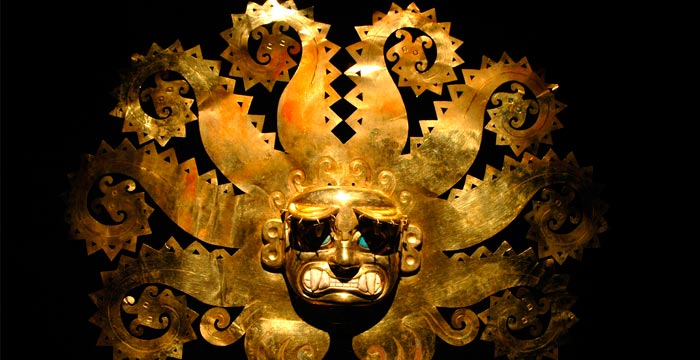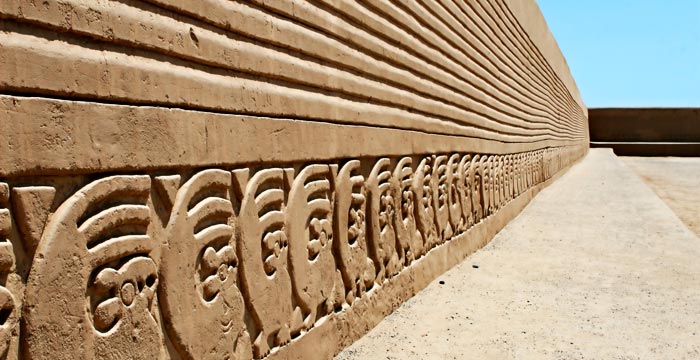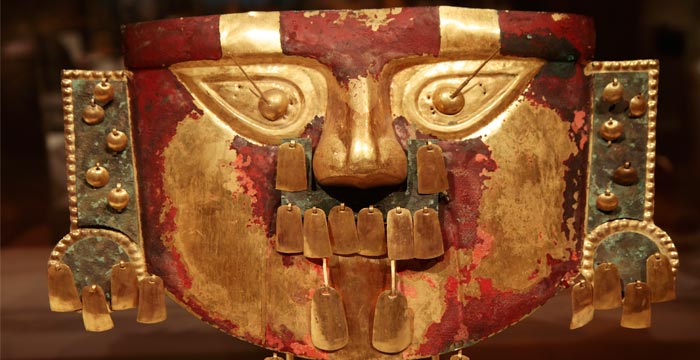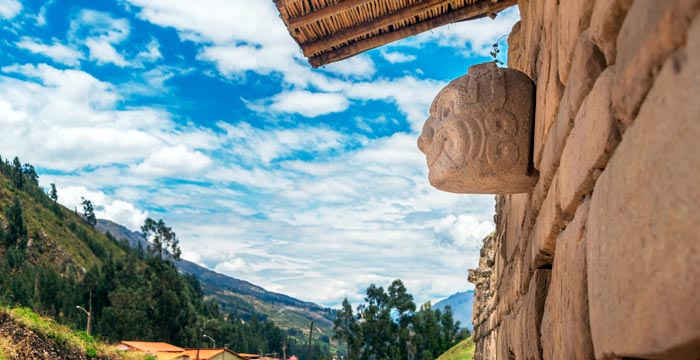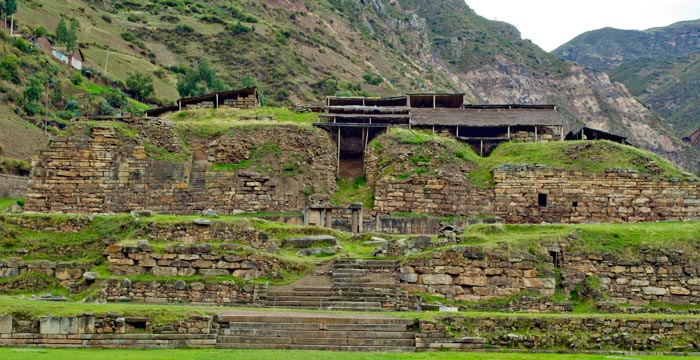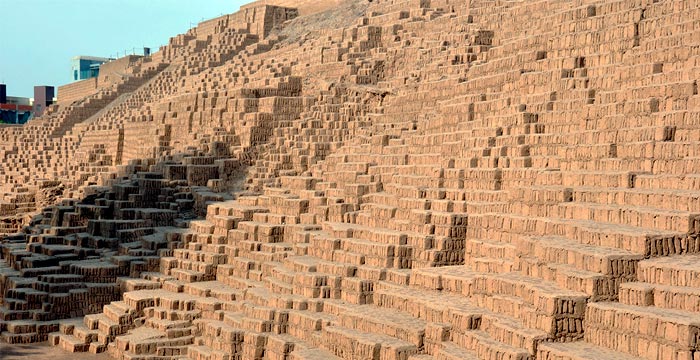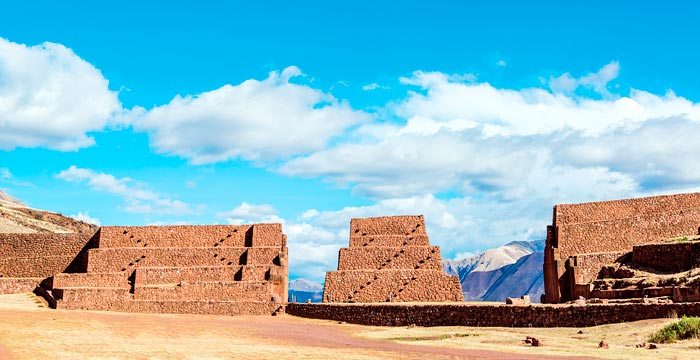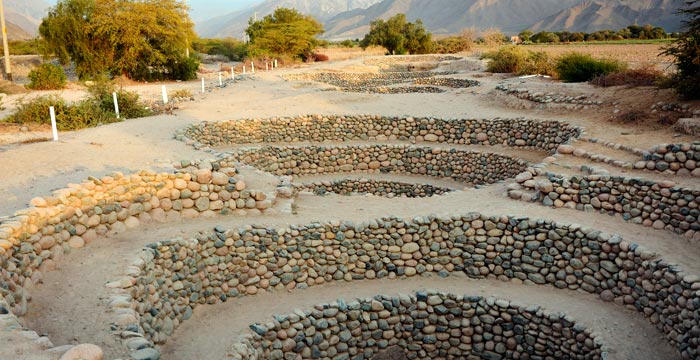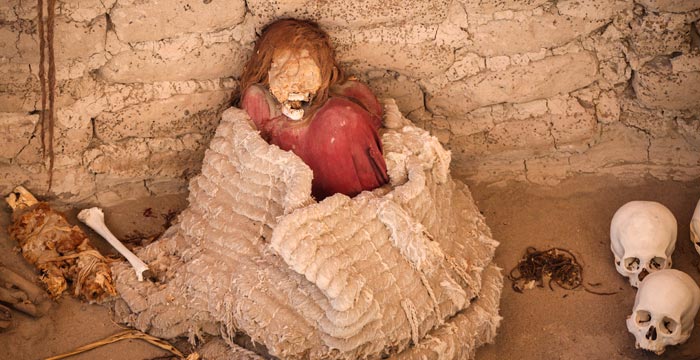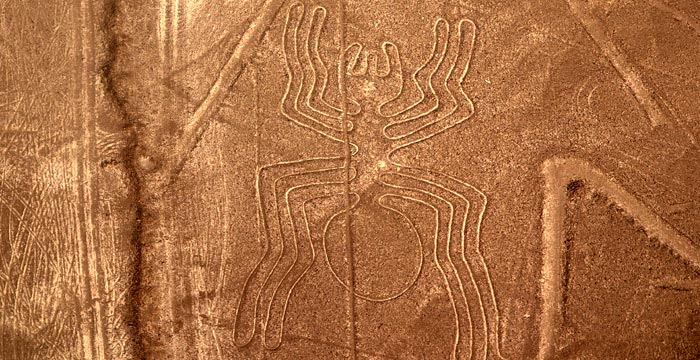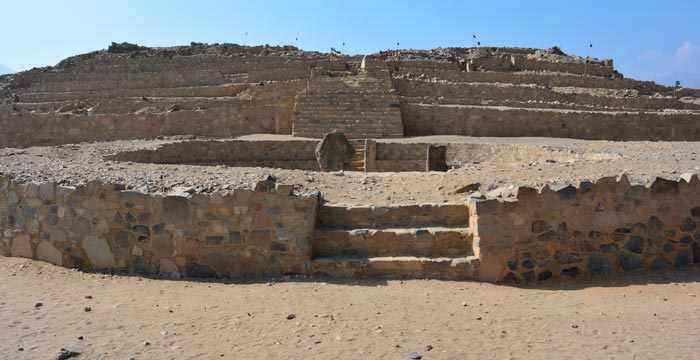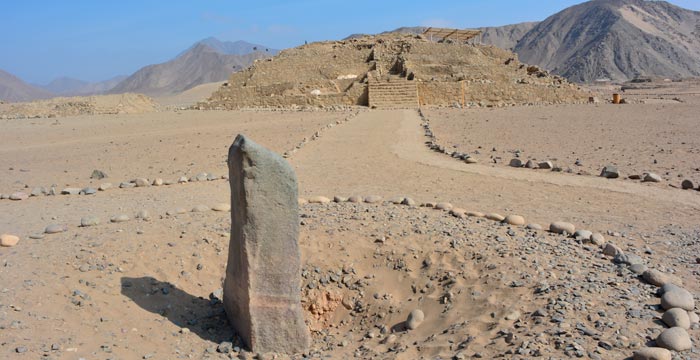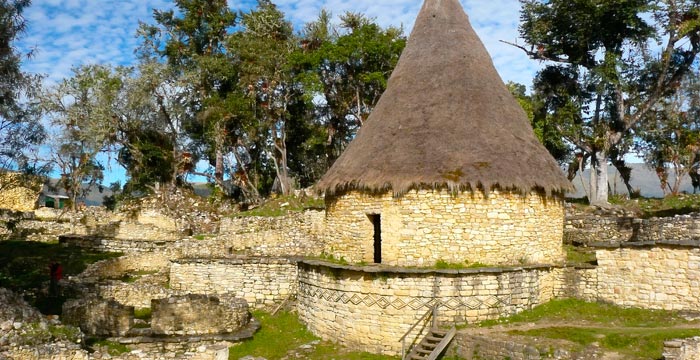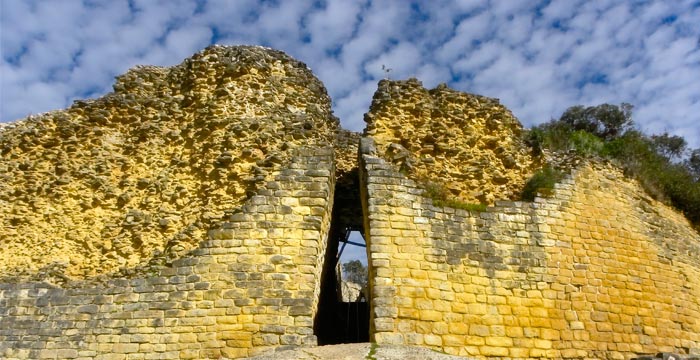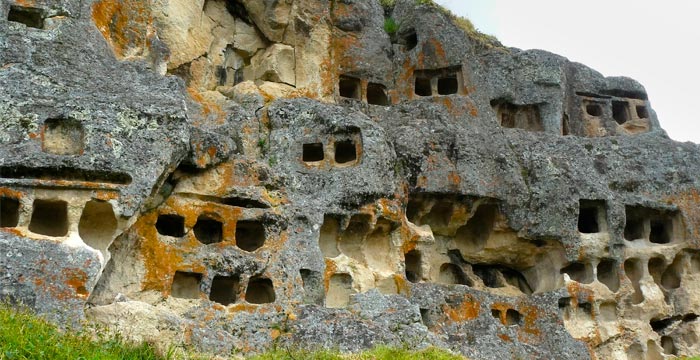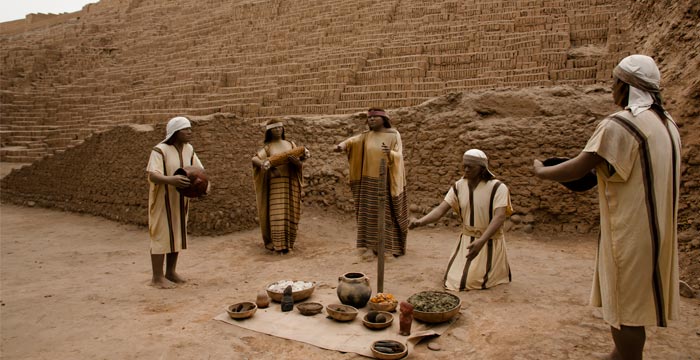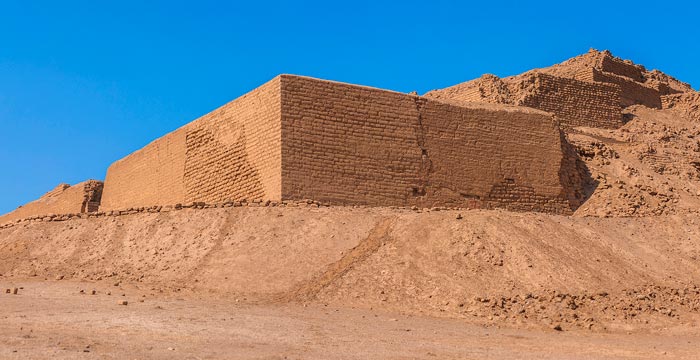Pre-Incan Civilizations in Peru
Millennia before the Incas constructed Machu Picchu, dozens of pre-Incan cultures existed across Peru. Having no form of written language, all we have to know them by are the pottery, textiles, tools, and constructions they left behind. On your private Peru tour, get to know these pre-Incan civilizations through Peru’s museums, archaeological complexes, and countless sacred sites with your own personal guide.
Moche Culture
The Moche culture has long caught both historians’ and the public’s attention with their elaborate, erotic ceramic figurines. Also known as the Mochica, this culture flourished in Peru from around A.D. 100 to A.D. 800, with their main territory confined to the region around present-day Moche and Trujillo, in northern coastal Peru.
Farming was their trade and they built advanced irrigation systems to water their crops as well as adobe temples, known as huacas.
Want to find out more about the Moche people during your personalized trip to Peru? Head for the Huacas del Sol temple complex near Trujillo, home to two Moche temples. Boost your Moche knowledge even further at Lima’s Larco Herrera museum, where their risqué pottery is displayed year-round.
Chan Chan Archaeological Area
A pre-Inca site located west of Trujillo, Chan Chan was the once-great capital of the Chimú kingdom, lasting from around 900 until the arrival of the Incas in the 1470s. It is now believed to be the largest adobe city in the world, and is comprised of ten walled citadels, each of which contains its own temples, residential quarters, ceremonial chambers and reservoirs. Look closely at the outer walls of the complex where numerous carvings depict fish, birds and small animals. The vast scale and complex layout of the site hints at the sophistication of the civilization that created it.
Chimu Culture
The Chimú people arose from the remnants of the Moche culture in northern coastal Peru. They occupied an area in the Moche Valley near Trujillo starting around A.D. 900, and were conquered by the Inca around A.D. 1470. Their capital, Chan Chan, was the largest adobe city in the Americas, and features elaborate irrigation systems that would have been used to bring water to crops of papaya, sweet potatoes, cotton and beans. The Chimú also raised llamas and practiced fishing.
The Chimú were a moon-worshipping people and – as with the Moche – human sacrifice was an important part of their religion. Remarkably, no evidence of arms or military relics has ever been found at Chimú sites, suggesting they were relatively peaceful people.
Among the most prized Chimú creative outputs are their highly distinctive shiny black pottery and fine metalwork items, which were made using copper, gold, silver, bronze, and tumbaga, a mixture of copper and gold. Chimú metalwork can be seen today at the Gold Museum in Lima.
Sipán Archaeological Complex
The unearthing of the Sipán Archaeological complex, containing the tombs of 14 Moche rulers, was one of the most important archaeological discoveries of the late 20th century. The key archaeological find was that of the tomb of the famous Lord of Sipán, whose elaborate burial vault drew comparisons to that of the world-famous Egyptian pharaoh, Tutankhamun. Inside the Sipán tomb were mummified remains, as well as pieces of jewelry, masks, textiles and various other offerings, presumably there to make the Lord of Sipán’s transition to the afterlife as smooth as possible. The Lord of Sipán is, for understandable reasons, no longer held in the tomb. If you want to see him, we can arrange for you to visit the Sipán Museum in Lambayeque, north of Chiclayo, during your personalized trip of Peru.
Chavín Culture
Those who undertake customized tours of Peru often forget that the famous Incas only dominated this region for a relatively short period of around two centuries. Many of the cultures that emerged before them were incredibly advanced, building the foundations upon which the Incas would ultimately launch their empire. Among the most well-known of these early civilizations is the Chavín, whose architectural achievements can still be seen at the Chavín Archaeological Complex in the Ancash region of Northern Peru. Here, a complex that includes a circular plaza and two flat-topped temple pyramids, reminds visitors of this influential though little-known culture that once thrived across Peru.
Chavin Archaeological Complex
One of the oldest pre-Inca cultures in Peru, the Chavín people lived in the northern Andean highlands from approximately 900 B.C. to around 200 B.C., with their influence spreading to the northern coastal-dwelling populations too.
They were adept metalworkers, capable of producing some rather fine gold pieces, as well as growing potatoes, quinoa and corn and rearing llamas both for their meat and wool. They were also responsible for coming up with ch’arki – dried, salted meat (in their case llama), which would later gain fame as “jerky.”
If you are keen to learn more about the Chavín people during your luxury trip to Peru, then head for the UNESCO-listed Chavín de Huantar, a ceremonial center dating back to around 900 B.C. Kuoda can arrange for your very own personal guide to show you around the site, which is located around 155 miles north of Lima.
Wari Culture
The Wari, also known as Huari, people occupied the south central Andes and coastal regions of Peru from A.D. 500 to A.D. 1,000. Unlike the more contained Moche and Chimú cultures, the Huari managed to expand and cover much more territory – a feat archaeologists attribute to a combination of warfare, religious expansion and the spread of their agricultural techniques. Among all their achievements, there is one that stands out; experts believe they were the brains behind Peru’s original agricultural terraces – an ingenious farming system that is still widely practiced all across the country today.
Their capital was located just slightly north of Ayacucho and the well-preserved remnants of it are the end point of a popular eight-day hike along the Cactus Trail. Kuoda can arrange for you to tour this site, or other Wari sites such as Pikillaqta near Cusco and another recently discovered site near Chiclayo, with a private guide during your customized tour of Peru.
Wari Archaeological Complex
This vast complex is thought to have once been home to a population of up to 40,000 people. It was built by the Wari civilization, a pan-Andean culture that was later absorbed by the Incas around A.D. 1,000. Located just outside the city of Ayacucho, this site showcases the urban planning expertise of these ancient people. The site covers an area of 988 acres, and interesting discoveries are still being uncovered here, including recently unearthed subterranean galleries, mausoleums with human remains and astronomical tables – proving there is still much to be learned about this culture. If you’re interested in digging further into the Wari civilization during your private tour of Peru, visit some of the other Wari archaeological remnants peppered throughout Southern Peru, such as Piquillacta south of Cusco.
Paracas Culture
Back in the 1920s, Peruvian archaeologist Julio Tello began excavating and studying a huge oceanside ruin on the Paracas Peninsula, introducing the world to yet another fascinating ancient Peruvian culture. Of all the many things unearthed here, there was one type of object that caught the public imagination more than any other: elongated human skulls. The discovery spurred much speculation as to their origin, and whispers began of possible extra-terrestrial findings, though most scientists concluded these unusually shaped heads were the result of a binding technique used on babies while their skulls were still pliable.
Besides the elongated skulls, other artifacts including ceramics and stone tools were uncovered, revealing the Paracas to have been fishing people with an intricate knowledge of water systems and irrigation, as well as being well-practiced in textile art.
If you are interested in finding out more about the Paracas people during your tour of Peru, make a beeline for the Paracas History Museum. The Regional Museum of Ica also contains a large collection of the aforementioned stretched-out skulls.
Nazca Culture
Between 100 B.C. to A.D. 800, the Nazca culture thrived in Peru’s Ica Valley. Picking up where the Paracas people before them had left off, they were skilled craftsmen and produced highly refined and intricate textiles and ceramics, using at least 15 different colors to paint their pottery.
Like the Paracas, they also practiced fishing, supplementing their food source by rearing llamas and with crops such as maize, squash and sweet potatoes – all still mainstays in modern-day Peruvian agriculture. The similarities don’t end there: elongated skulls have also been found at Nazca sites, though the head-binding practice appears to have been a lot less widespread in their civilization compared to how prevalent it was among the Paracas.
The Nazca people also built underground aqueduct systems that still function today – a testament to their enduring quality – and used coca and the hallucinogenic San Pedro cactus for spiritual ceremonies.
Of course, we can’t mention the Nazca Culture without mentioning the iconic memento they left to the world: the Nazca Lines. This series of etchings in the Nazca Desert are a world-famous UNESCO-listed attraction, though the purpose behind them still causes a lot of head-scratching among experts. Kuoda can arrange for you to find out more about the Nazca culture at the Regional Museum of Ica before flying over the Nazca Lines – they are so big that the only way to see them properly is by zooming overhead!
Nazca Lines
Back in the late 1920s, rumors began to surface of commercial plane passengers spotting mysterious pictures on the ground while flying over the Nazca Desert. In 1939, American professor Paul Kosok decided to investigate the reported desert etchings, and uncovered a huge network of petroglyphs, ranging from enormous lines to drawings of hummingbirds, monkeys, mockingbirds, spiders, fish, lizards and even a dog – all carved into the desert floor by the Nazca people. Why they were put here or what they mean is up for debate; there are numerous theories about their origins. Some think the lines may have functioned as an astronomical calendar, while others believe they were created with the aid of extra-terrestrials! If you want to see the Nazca Lines during your luxury tour of Peru, let Kuoda know. Their large size makes it hard to observe them properly from the ground, but we can arrange for you to fly over them in a light aircraft.
Caral Culture
When the ancient city of Caral was first discovered in the early 20th century, the world took little note, largely because archaeologists believed the city they had uncovered was relatively recent. In the 1990s, Dr. Ruth Shady Solis investigated further, proving that this complex and extremely advanced civilization had actually emerged in Peru at least 1,000 years before previously thought. That made the Caral, or Norte Chico civilization, the most ancient civilization of the Americas.
Flourishing between 3,000 B.C. and 1,000 B.C and with an estimated 30 major hubs along the north-central Peruvian coast, the Caral culture is responsible for one of the most ancient urban centers in the world. At the site itself, there were no ceramics and very few examples of visual art uncovered, though the architecture – pyramid-like platform mounds and sunken round plazas – is a remarkable achievement for a civilization as old as this. Perhaps the most striking discovery at Caral was a quipu, a system of knotted cords used as a primitive counting and record-keeping tool. This discovery represents one of the earliest forms of record-keeping and communication on this planet, and was of huge importance, blowing all archaeologists’ previous estimations out of the water. A visit to Caral can be added to your customized tour of Peru as a full-day trip from Lima.
Sacred City of Caral
The Caral culture began constructing the pyramids, plazas and homes of this elaborate complex in around 2,600 B.C. – around the same time the Egyptians were busy building the pyramids in Gaza and the prehistoric people of what’s now England were hauling boulders for Stonehenge. That makes Caral the most ancient city in all of the Americas. Located in the Supe Valley, some 113 miles north of Lima, this once-thriving 5,000-year-old metropolis contains monumental and residential man-made architecture. The layout was considered so advanced that later civilizations used it as a basis for their city-building plans. For travelers hoping to come here as part of their exclusive tour of Peru, it’s worth bearing in mind that the archaeological complex is in quite a rural location; usually, it’s best visited as part of a full-day tour from Lima.
Chachapoyas Culture
Chachapoyas, the current capital of the Amazonas regions of Peru, was built by the Spanish and is now a flourishing market town. It reveals little of its pre-Hispanic past, though the cloud forests surrounding it hide some interesting archaeological sites belonging to the Chachapoyas culture. Inspect some of the mummies and artifacts unearthed from local tombs at the small town museum or head for the archaeological sites outside the city on daytrips.
Kuélap Archaeological Complex
At the crest of the Amazonian Andes of northern Peru, located at more than 9,800 feet above sea level, is the fabulous Fortress of Kuelap – the one-time home of the Chachapoyas (a.k.a., the “People of the Clouds”). Most visitors to Peru haven’t heard of Kuelap, which is probably a good thing – for now, at least, it remains crowd-free. Up until recently, only a relatively small number of wobbly-legged tourists made the journey to the precipitous ridge where the fortress stands, overlooking the Utcubamba Valley below; now, however, with the addition of Peru’s first cable car inaugurated in March 2017, it has become much easier to visit this impressive archaeological site.
Kuélap was built by the Chachapoyas, a pre-Inca culture that flourished from the ninth century until the arrival of the Incas in the 15th. There are more than 400 circular stone houses on the site, which is bordered by an imposing 66-foot-tall wall. Travelers can explore Kuélap during their Peru vacation via a two-day tour from Chiclayo.
Ventanillas de Otuzco (Otuzco Windows)
This ancient necropolis in Northern Peru is often referred to as the Otuzco Windows because of the orderly rows of square and rectangular funerary niches painstakingly carved into the rock hill face, which happen to look a little like windows. It was built by the pre-Inca Cajamarca people, though the exact age of the site isn’t known; by the time archaeologists got there, the tombs had already been looted leaving very little clues for them to work with. It’s just 10 minutes away from Cajamarca city, in the northern highlands of Peru.
Ancient Lima Culture
While many city explorers focus their efforts on experiencing Lima’s buzzing contemporary and throwback colonial cultures, there is an oft-overlooked and ancient aspect of Lima’s cultural heritage that curious travelers to Peru may want to learn more about. Lima and the surrounding regions are proud of their links to the Ichma culture. The Ichma were pyramid-building people who thrived for more than three centuries before the Incas came onto the scene. Evidence of their existence – typically the remains of adobe pyramids – can be inspected at several large archaeological sites near Lima, including the Tomb of Huallamarca and Huaca Pucllana.
Pachacámac Archaeological Complex
Another huge ancient complex, this one is attributed to the Ichma culture, who used Pachacámac as a religious site. History enthusiasts can take an exclusive tour of the massive site during a day-long excursion from Lima, which would have been used the palaces and temples here to worship and praise Pacha Kamaq, their creator god. When the Incas later arrived, they put their own stamp on the site adding a few extra structures. Don’t leave without checking out the on-site museum, which contains compelling artifacts such as a two-faced wooden idol depicting Pacha Kamaq.

